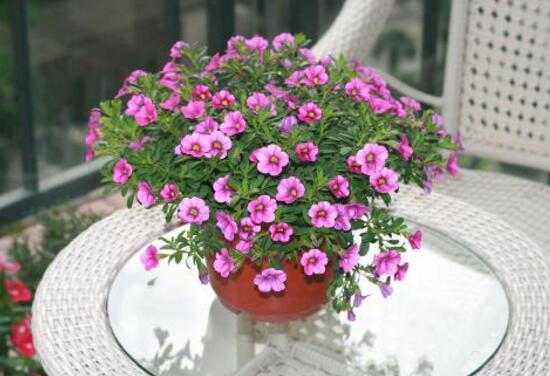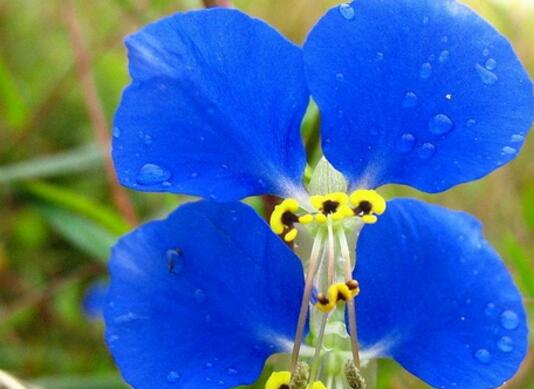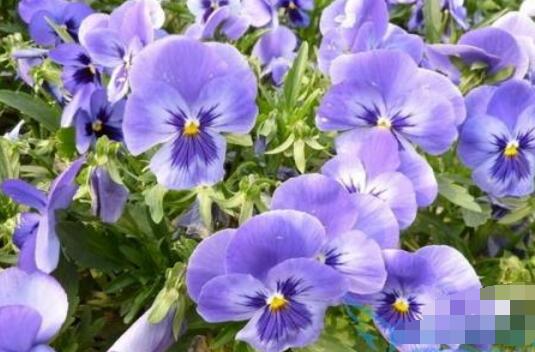How to raise Fulang flower / African chrysanthemum, culture methods and matters needing attention of potted African chrysanthemum
African chrysanthemum, also known as Fulang flower, is a famous and floating flower with large and colorful flowers, which is often used as a material for flower arrangement and dried flowers. In life, many flower friends like to grow their own gerbera, so how to grow gerbera? The following are the breeding methods and precautions of African chrysanthemum selected by the editor, which are very comprehensive. Friends who want to raise them must take a look at them.
First, how to raise gerbera and understand its habits

Indoor farming is not like the wild, everything needs to be created by ourselves, so how to raise African chrysanthemum, we must first understand its growth habits, and then to create an environment conducive to its growth. In this regard, the editor will bring you the breeding methods and matters needing attention of African chrysanthemum from the aspects of soil, light, temperature, watering, fertilization, pruning and so on.
2. Culture methods and matters needing attention of potted African chrysanthemum
1. Soil, slightly acidic
How to raise potted African chrysanthemum, first of all, it is natural to choose soil, whether it is to plant their own, or to change the pot soil, the choice of soil is very important. According to the growth habits of African chrysanthemum, we should choose a slightly acidic soil with loose, fertile and good drainage.
Pot soil selection: the basin does not need to be too large, 12-18cm is suitable for African chrysanthemum; soil can be made of 2 parts of peat and 1 part of perlite, or peat-based culture soil sold in the market, such as Cuiyun and so on.
2. Light, all-day sunshine in winter
In the process of cultivating gerbera, we need to give it enough light. Because African chrysanthemum likes light and requires more light, it becomes stronger and stronger when there is no lack of water, and it grows faster and blossoms more.
Note: be sure to give African chrysanthemum sufficient light, in the lack of light, the need for artificial light. In addition, in summer, when the sun is too strong, it is necessary to shield the gerbera from some strong sunlight, while in winter, try to keep full sunshine.
3. Temperature, 20-25 ℃
In the breeding method of gerbera, temperature is also a point that we need to pay attention to. It is understood that African chrysanthemum is neither heat-resistant nor cold-resistant, so it is best to control the temperature between 20-25 ℃ when breeding indoors.
Note: in winter, the temperature should not be lower than 10 ℃, otherwise African chrysanthemum will stop growing. It is worth mentioning that the limit tolerance temperature of African chrysanthemum is 5-40 ℃, but it should not be too long-lasting. We must pay attention to this.
4. Watering
How to raise African chrysanthemum, watering is indispensable. It is understood that African chrysanthemum likes a humid environment, in the growing period, we should ensure an adequate water supply. If the temperature is high in summer, it can be watered frequently with thin water, while the temperature in winter is low, and the interval between watering can be longer.
Watering time: people can often touch the leaves of African chrysanthemum with their hands, stiff, do not need water, slightly soft and not wilting is the best time to supply water.
Note: water African chrysanthemum, not at noon, preferably in the morning or evening. Besides, be careful not to pour it in the center of the leaf.
5. Fertilization
After watering, let's talk about fertilization, which is also very important in the cultivation of African chrysanthemum. It is understood that African chrysanthemum has a great demand for fertilizer. Fertilizer should be applied thinly, once a week in spring, less in summer and winter, and once every half a month.
Note: when the temperature is too high or too low, everyone should stop fertilizing. In addition, fertilize African chrysanthemum should be adequate and balanced, like other herbs, use balanced fertilizer of nitrogen, phosphorus and potassium if you want to grow strong. As for how to fertilize African chrysanthemum, there is a specific introduction, so I won't say much here.
6. Pruning
The above points must be done in the process of cultivating African chrysanthemum, and then we need to pay attention to them, such as pruning and diseases and insect pests. The first is pruning, in the growth process, there may be African chrysanthemum leaves yellowing or too dense phenomenon. At this time, we should prune properly and remove yellow leaves, withered leaves and overdense leaves.
7. Diseases and insect pests
In the process of growing up in Africa, it is inevitable that worms will get sick because of improper maintenance and other reasons. Among them, the diseases are powdery mildew, leaf spot, virus and so on, and the pests are whitefly, cabbage worm and thrips. As for what to do, there is a detailed introduction in the pest control of African chrysanthemum, you can refer to the solution.
Fulang Flower African Chrysanthemum Culture methods and cultivation techniques of African Chrysanthemum
African chrysanthemum, also known as Fulang flower, symbolizes mutual respect and love, perseverance and no fear of hardship. Some areas like to decorate their new houses with bouquets of Fulang flowers during wedding celebrations. Take its harmony to reflect the newlyweds' respect and love for each other. African chrysanthemum is a perennial herb with many colors, such as white, purple, yellow, red and orange. Would you like to know more about the African chrysanthemum language, the cultivation methods and cultivation techniques of African chrysanthemum? wed114 will explain it in detail!
Fulang Flower African Chrysanthemum Culture methods and cultivation techniques of African Chrysanthemum
African chrysanthemum language
African chrysanthemum language symbolizes mystery, mutual respect and love, perseverance and no fear of hardship.
The flower language of African chrysanthemum is always happy, and it is the most commonly used flower language in China: elegance, nobility and seclusion.
Pot production of African chrysanthemum
Some friends have carried out pot culture, so the editor will talk about the aspects that need to be paid attention to in the daily production process of potted African chrysanthemum.
First, the greenhouse should be equipped with relevant facilities to meet the conditions of ventilation, sunshade and heating. It is also equipped with seedbeds, floor cloths or irrigation systems if possible. The greenhouse used in production should be airtight and prevent insects from entering it.
Second, the temperature should be controlled between 15 ℃ and 25 ℃, and the maximum temperature should not be higher than 30 ℃ and the lowest should not be lower than 13 ℃. Under general production conditions, the average daily temperature ranges from 18 ℃ to 19 ℃. Ventilation should be carried out when the temperature exceeds 19 ℃.
Third, the medium should have good air permeability and drainage performance, and the best matrix is the mixture of peat and perlite. The values of pH and EC are 5.5 to 6.0 and 0.7 to 1.0 respectively, which is beneficial to the absorption of trace elements by Gerbera jamesonii.
Fulang Flower African Chrysanthemum Culture methods and cultivation techniques of African Chrysanthemum
Fourth, potted African chrysanthemum is very sensitive to water, the correct watering time is in the morning or evening, at night to make the plant relatively dry. When African chrysanthemum plants begin to grow roots, they must be watered from the bottom, which can be infiltrated at the bottom; they can be watered from the top of the plant during high temperatures, but pay attention to prevent fungal mildew from the center of the plant.
5. African chrysanthemum prefers fertilizer. The ratio of nitrogen to potassium is 2:1 in summer and 1.5rl in winter. The pH value of fertilizer is between 5.5 and 6.0.
Fulang Flower African Chrysanthemum Culture methods and cultivation techniques of African Chrysanthemum
6. The most suitable sunshine length in the growth process of African chrysanthemum is 11 hours to 13 hours, and artificial light can be replenished at low light. Artificial lighting requirements: 3500 to 4000 lux per square meter. The supplementary light was carried out 4 weeks after the plant was put into pot.
Conclusion: the above is the flower language of African chrysanthemum and breeding methods, friends in need can carry on the relevant reference. The corresponding culture methods of different plants are also different, so we should pay attention to the methods and the prevention and control of diseases and insect pests.
How to raise African chrysanthemum? Culture methods and matters needing attention of African Chrysanthemum
African chrysanthemum, also known as Fulang flower, marigold, Persian flower, etc., is a perennial herb of the genus Compositae. African chrysanthemum is rich in design and color, such as red "enthusiasm", white "Bianca", yellow "sun dance" and so on, which have high ornamental value and are often potted indoors. So, how to raise gerbera? The breeding methods and matters needing attention of Gerbera are introduced as follows.
Picture: African chrysanthemum
I. Culture methods of African chrysanthemum
1. Light and temperature: African chrysanthemum likes to take good care of the growth environment, the demand for light is relatively large. Sufficient light should be maintained during the growth of African chrysanthemum, and artificial light is needed when the light is insufficient. In addition, in summer, you need to shield African chrysanthemums from some strong sunlight, while in winter, try to keep all-day sunshine. Gerbera gerbera is a plant that is neither heat-resistant nor cold-tolerant. The suitable temperature for its growth is 20 ℃-25 ℃. The temperature in winter should not be lower than 10 ℃, otherwise it will stop growing.
two。 Soil: African chrysanthemum likes fertile and loose soil, requires good drainage, slightly acidic soil is more suitable.
Picture: African chrysanthemum
3. Watering and fertilization: African chrysanthemum has a great demand for water and fertilizer, so it is necessary to maintain an adequate supply of water and fertilizer during the growing period. Watering should be changed according to seasonal changes. It can be watered more frequently in summer and longer in winter. Watering can be arranged in the morning or evening, and be careful not to pour it in the center of the leaves. African chrysanthemum also has a great demand for fertilizer. Fertilizer should be applied thinly, usually once a week in spring and autumn, less in summer and winter, once every half a month, and stop if the temperature is too high or too low.
4. Propagation method: African chrysanthemum can be sown and propagated, but its offspring will mutate, so it is generally used in ramet propagation and cuttage propagation, as well as tissue culture.
Picture: African chrysanthemum
II. Matters needing attention in Gerbera Culture
1. Pruning: during the growth of gerbera, the leaves may turn yellow or too dense due to the growth of branches and leaves. At this time, it is necessary to prune and remove yellow leaves, withered leaves and overdense leaves.
two。 Diseases and insect pests: there are powdery mildew, leaf spot disease, virus disease and other diseases in the growth process of African chrysanthemum, as well as pests such as whitefly, cabbage worm and thrips.
[editor's conclusion] African chrysanthemum likes the environment where it is warm in winter and cool in summer, ventilated and sunny, it is not cold-resistant and avoid hot, so it needs special attention in the process of maintenance. The above introduces the breeding methods and matters needing attention of African chrysanthemum, hoping to help you!
- Prev

How to raise butterfly flowers, the breeding methods and precautions / fertilization of butterfly flowers should be paid attention to.
Butterfly flowers bloom like butterflies, so they are very popular, but if you want to raise butterfly flowers well, you still need to consider the environment and methods in order to make them blossom more when the flowering time comes. So how to raise butterfly flowers? Let's take a look at the culture methods and matters needing attention of butterfly flowers.
- Next

How to water the butterfly flower, when should the butterfly flower be watered once / thoroughly without stagnant water?
When planting butterfly flowers, how to water, when to water, what to water and so on, these are the problems that flower friends consider when learning how to raise butterfly flowers, because too little watering will lead to poor plant growth, while too much watering will lead to root rot.
Related
- Fuxing push coffee new agricultural production and marketing class: lack of small-scale processing plants
- Jujube rice field leisure farm deep ploughing Yilan for five years to create a space for organic food and play
- Nongyu Farm-A trial of organic papaya for brave women with advanced technology
- Four points for attention in the prevention and control of diseases and insect pests of edible fungi
- How to add nutrient solution to Edible Fungi
- Is there any good way to control edible fungus mites?
- Open Inoculation Technology of Edible Fungi
- Is there any clever way to use fertilizer for edible fungus in winter?
- What agents are used to kill the pathogens of edible fungi in the mushroom shed?
- Rapid drying of Edible Fungi

